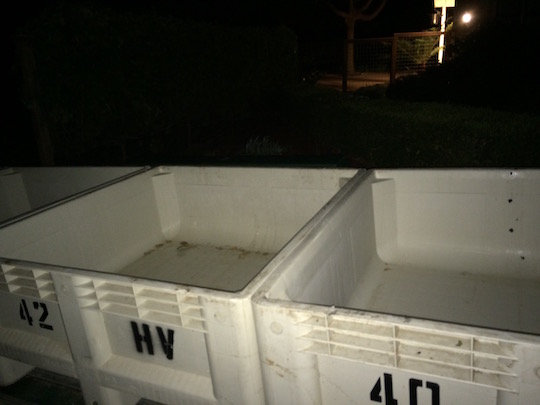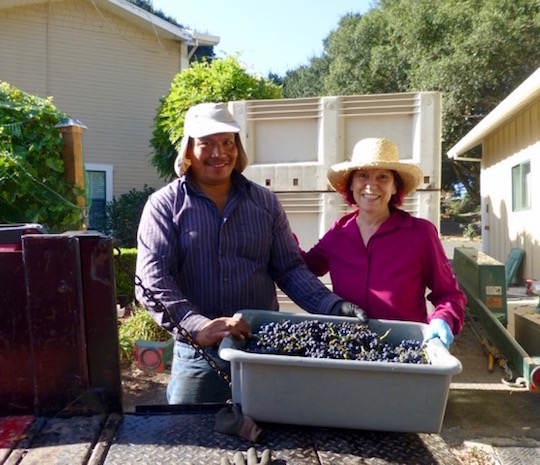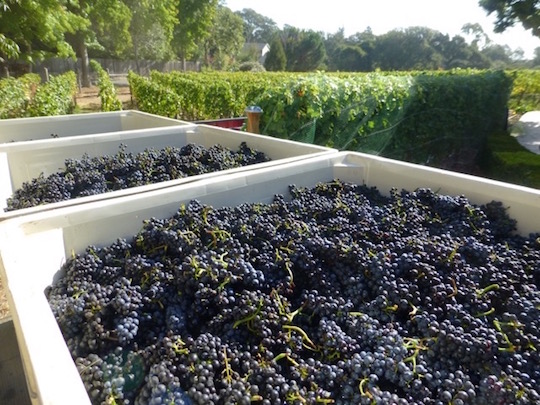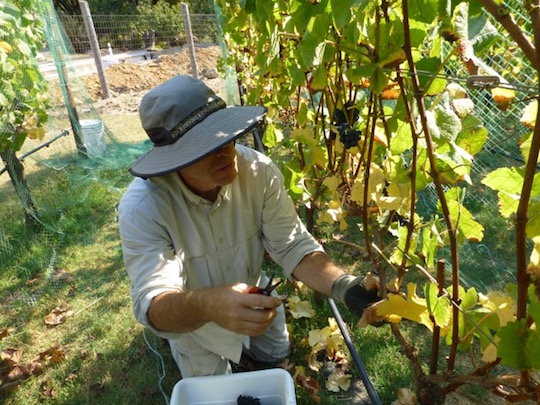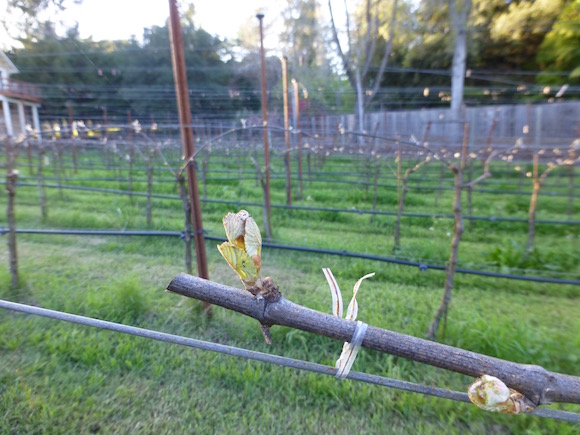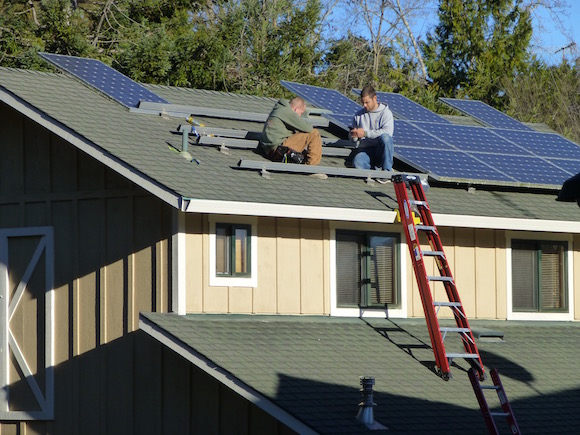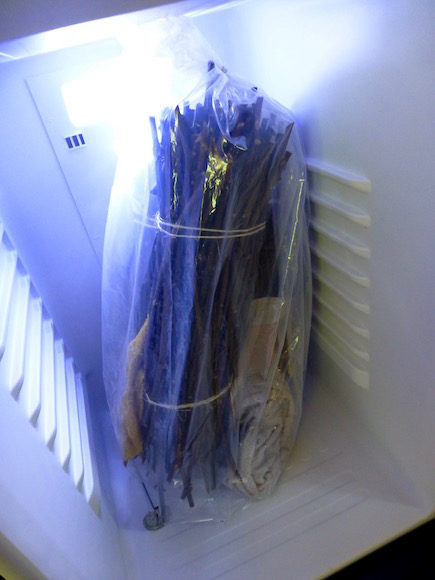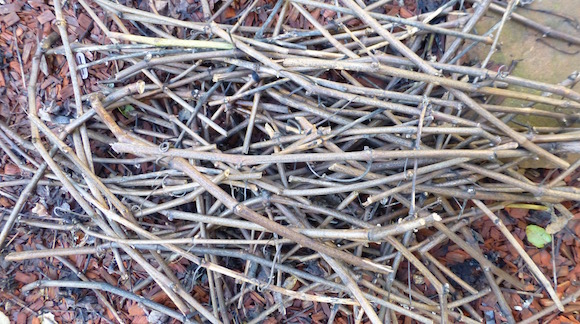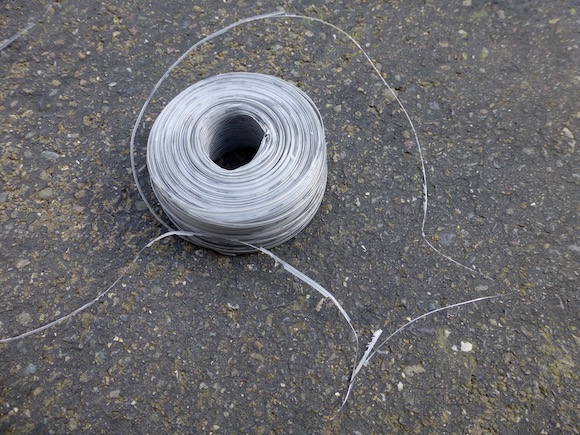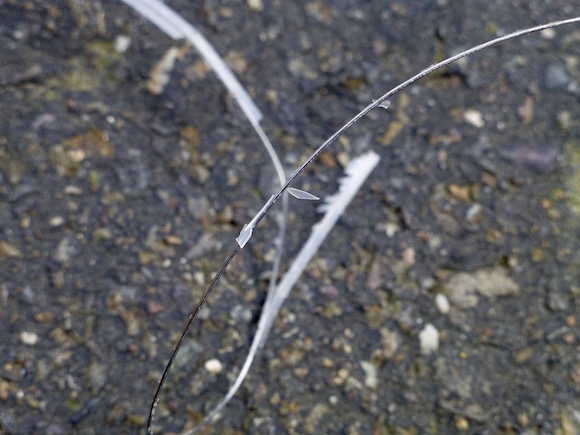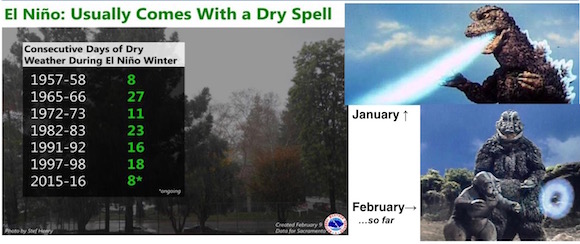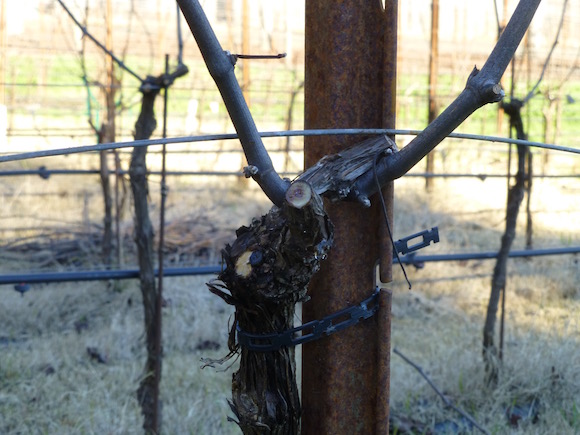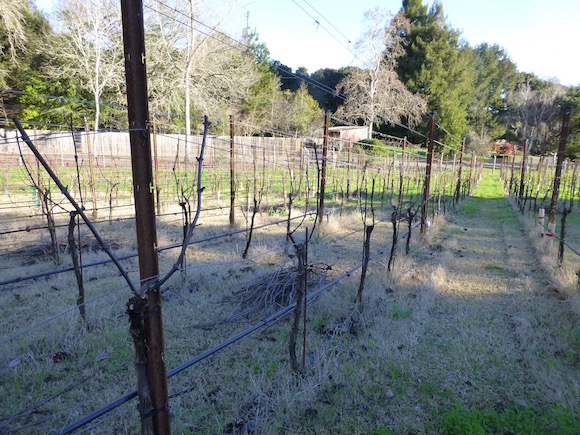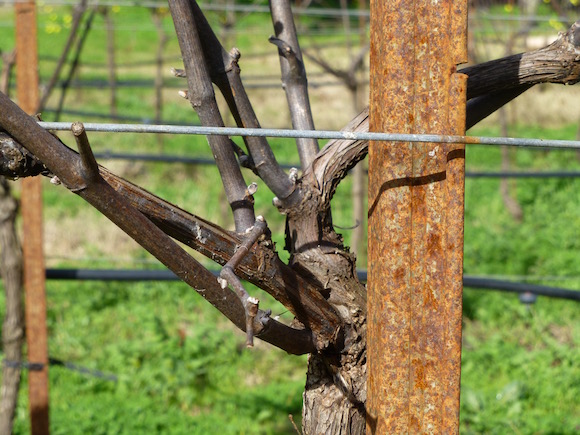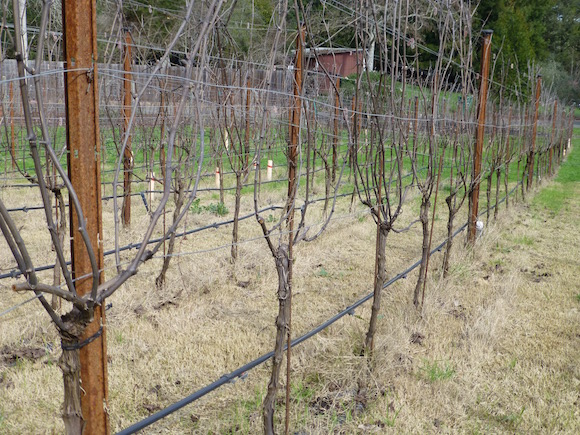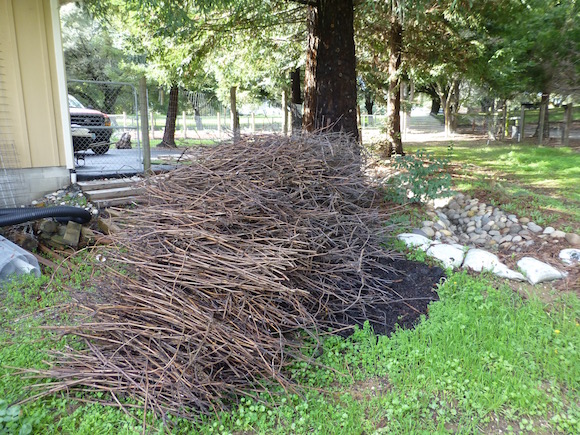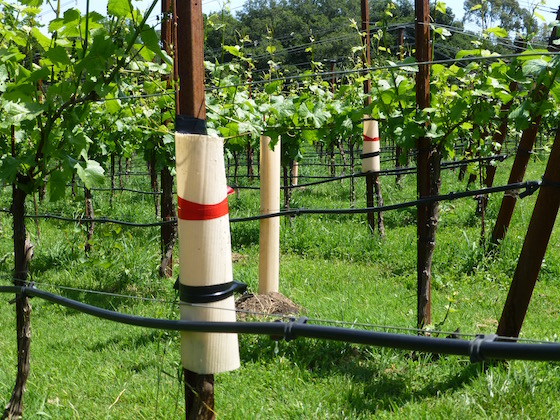
So, for any of you that have followed my blog you know that when we originally planted our Pinot Noir in 2010 the nursery accidentally included a little over 50 Merlot and 5 Chardonnay bench grafts. We didn’t realize what the Merlot were until our second harvest in 2013. The last 2 years we have made Merlot wine…but it is very difficult to handle them in the vineyard as they are spread out over many rows. (The got mixed up in our planting process). So…we decided to graft them over to the Pommard clone. In Part 1 I showed how we cut off last years canes during pruning and put them in our extra refrigerator…so what is next?
1 -Take them out of cold storage (~36F) for a day and soak one end in water.
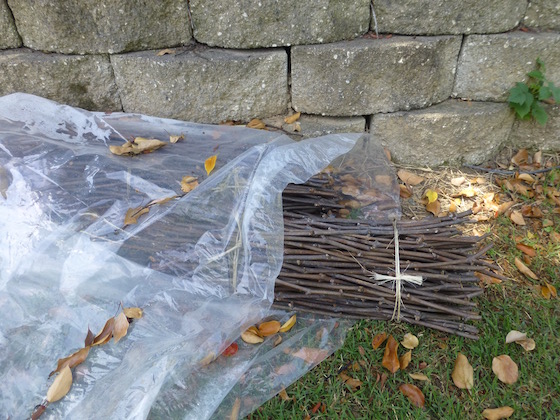
In the picture below you can see the buds on the canes. These will be used for bud grafting.
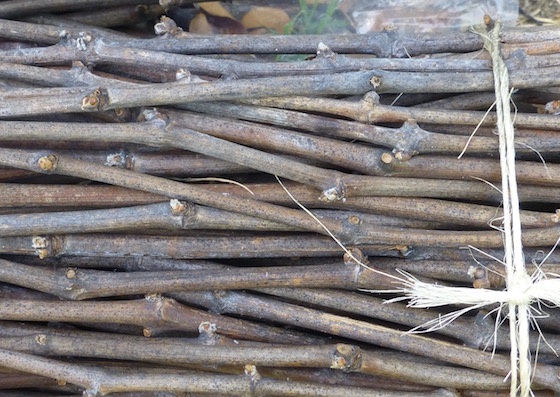
2 – Hire a grafter…seriously, for many other varieties the success rate is >98% but for Pinot Noir you are lucky to get 90% and for those who don’t know what they are doing much less.
3 – The grafter will cut off the trunk of the vine about 2′ above the ground.
4 – Then they notch the trunk on two sides and notch out two buds from last years canes.
5 – They then place the buds into the notches and hold them in place with tape.
6 – You then cover with a grow tube to keep direct sunlight off them.
7 – Lastly, you wait about three weeks when the canes should appear and you can take the grow tube off. You may or may not get any grapes, but the important part is for it to grow strong this year so it can be pruned into shape next spring.
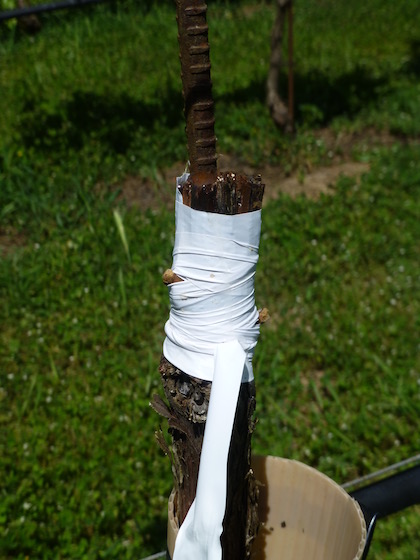
Why in my first picture I have grow tubes with and without red tape? The red tape denotes the bud grafts and the normal grow tubes are replants that gophers/mowers/trimmers killed the previous few years.
